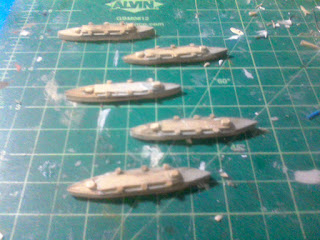One thing I discovered from my terrain making projects for the tabletop is how wood chip looks very much like stone in the smaller scales. My wife and I recently had a ton of wood chip delivered to use in our garden, so I selected a few likely small pieces from the heap for my next modelling project - a henge for the Dux Britanniarum tabletop.
Henges date from the Neolithic/Early Bronze Age, and are dotted throughout the British Isles. Technically from the archaeological point of view a henge is a space located within a ditch which is itself enclosed by an earthen bank. Stone circles - even mighty Stonehenge - are a different beast, but the term has stuck, so...
As a gaming terrain piece they can therefore appear on any tabletop battlefield set in Britain during any era from the Neolithic on. My aim is to make a small-ish site like those of Arbor Low Henge in Derbyshire or Scorhill on Dartmoor in Devon. I'm in two minds whether to make the outer ditch and bank as the piece will then have a larger footprint on the tabletop. We'll see.
I started with this handful of suspicious-looking brown objects...
Using a mitre box and razor saw I cut them in half, before making the base for the henge. The core of the base is an old CD which I sandwiched between two layers of cereal card, bending the card down around the edges to make a low mound. The cut pieces of wood stand in the background.
Once the card was glued tight on the CD I arranged the wood pieces in a suitable henge configuration and fixed them in place. I decided not to make any trilithon ('table') pieces for the sake of simplicity and robustness. They tend not to feature in the smaller henge sites anyway. The shadows the pieces cast already make them look like the upright stones and sacrificial slab of a small stone henge. I'm on the right track...
The next step was to spread a little spackle around the base and 'stones,' leaving some patches bare. These will be areas of lower ground within the circle when the top layer is done.
Suitably spackled, the piece awaits the undercoat. More to follow...






















